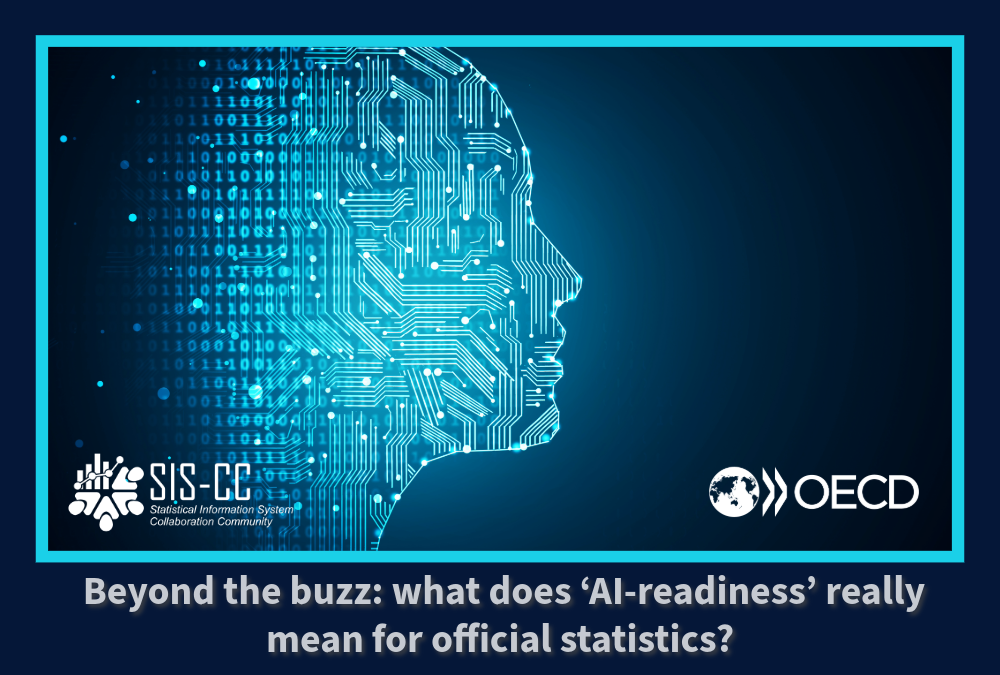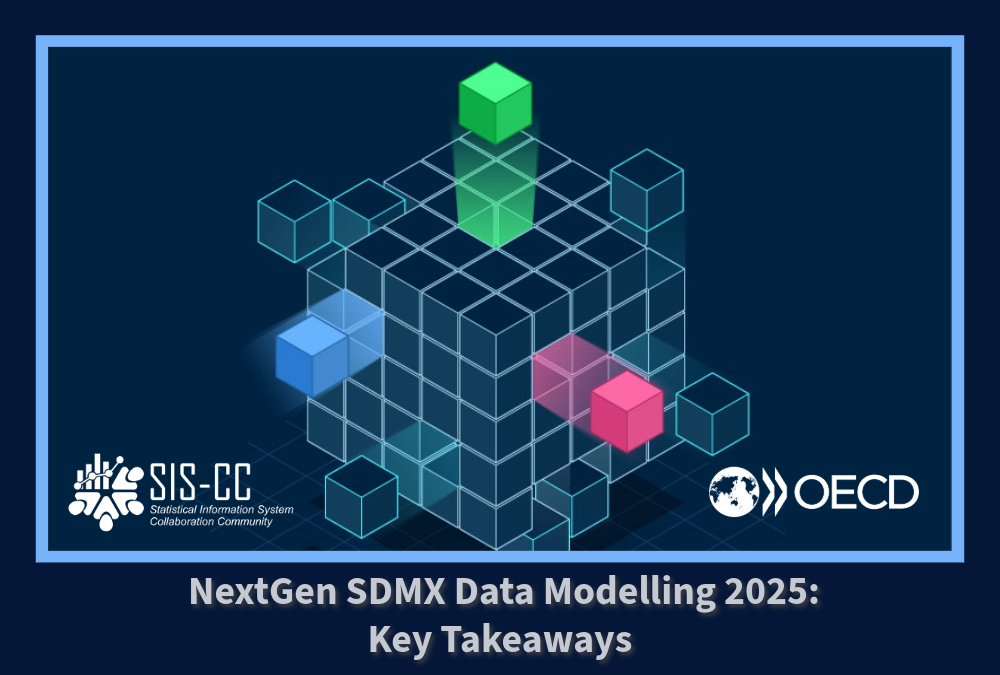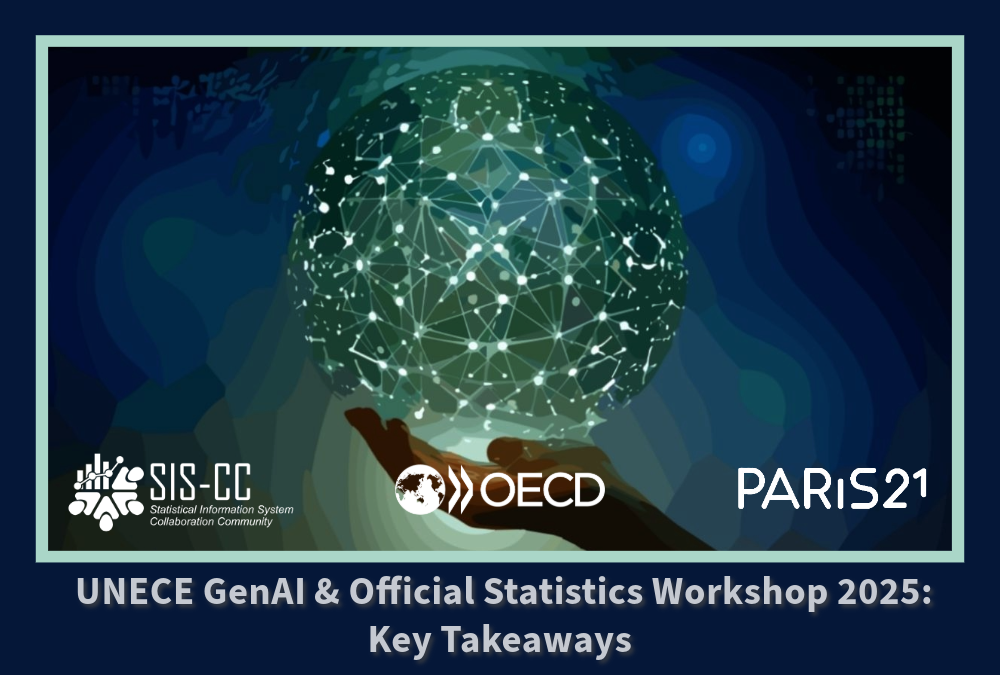From 27 to 30 September 2021, compilers and users of official statistics from across the world gathered at the 8th Global Conference on Statistical Data and Metadata Exchange (SDMX) to present and discuss recent achievements and upcoming SDMX developments. This year’s event was hosted virtually by the National Institute of Statistics and Geography of Mexico (INEGI).
Following the official launch of SDMX 3.0, a new version of the standard, a series of more than 50 presentations was held with sessions chaired by high-level representatives of the event’s sponsor agencies – the Bank for International Settlements, European Central Bank, Statistical Office of the European Union, International Monetary Fund, Organisation for Economic Co-operation and Development, United Nations, and the World Bank.
“Data without Barriers”, the theme of this year’s Global Conference, found its way into insightful presentations from various members of the SIS-CC.
On behalf of the National Institute of Statistics in Tunisia (INS Tunisia), Fadhila Najah, Chief of Dissemination Database Unit, described the experience of the national statistical office in optimising data dissemination throughout the entire national statistical system. In pursuit of this goal, INS Tunisia, in close cooperation with the SIS-CC, has been working on adopting a new dissemination platform based on the community-developed .Stat Suite. The upgraded platform will facilitate the harmonisation and collection of data coming from a wide range of sources, including ministries.
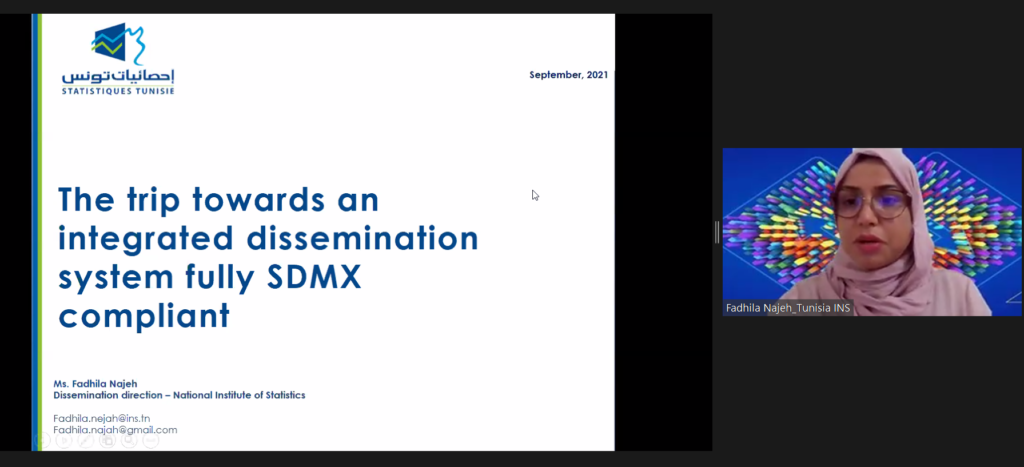
In a following presentation, Denis Grofils, Statistics Advisor at the Pacific Community, walked the audience through the creation and technical foundation of the Pacific Data Hub, a one-stop platform providing access to a large number of indicators on different topics from across the Pacific region. Among its five components is the PHD.Stat, based on the community-developed .Stat Suite Data Explorer, for searching, visualising, and sharing data.
“The Pacific Community was one of the first members of the SIS-CC to implement Version 8 of .Stat Suite and has used it to significantly strengthen and modernise dissemination of official statistics. An overview was presented at the Global Conference,” Denis Grofils summed up.
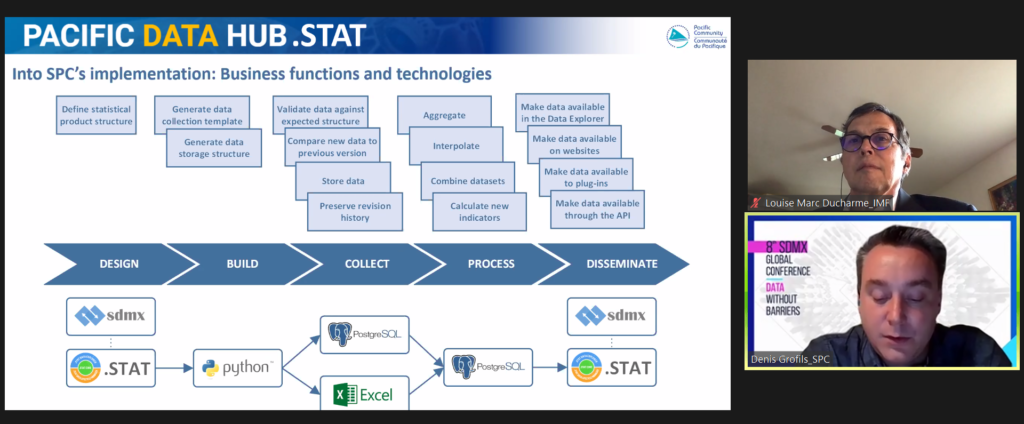
On the sidelines of their presentation on SDMX and .Stat Suite for geospatial analysis, the Australian Bureau of Statistics (ABS) made a momentous announcement with Australia being the first OECD member country with a production instance of .Stat Suite.
“We at the Australian Bureau of Statistics are excited to release the next version of .Stat Suite. It includes the Data Explorer, which is compliant with the Web Content Accessibility Guidelines 2.0, and enables us to release data in a more timely way. The Data Explorer augments our dissemination capability with a rich and functional interface for our customers to interact with our statistics. It also makes it easier for customers to construct calls to our .Stat Data (SDMX) APIs. Thanks to the SIS-CC for their unwavering commitment and support to help get us to this point,” Jeremy Michell, Director, Dissemination Systems Support and Modernisation at the ABS, announced.
Another major milestone made it on the stage of the Global Conference. The SIS-CC SDMX Power BI Connector, presented in a demo by David Barraclough, Smart Data Practices Manager at the OECD, and Ruth Pozuelo Martinez, business owner of Curbal, has been officially certified by Microsoft. As from the next update in October 2021, it will be integrated into the popular Microsoft Office package and allow users of official statistics worldwide to easily connect, shape, visualise, and share data insights through Power BI. Eric Anvar, Head of Smart Data, at the OECD said
“the SIS-CC SDMX Power BI connector is another smart way of interconnecting ecosystems (Power BI user base, producers of official statistics) as a way to produce value out of data. We foresee that the semantic power of SDMX will continue to contribute greatly to accessibility of official statistics, in ways similar to the SIS-CC SDMX Power BI connector”.
A joint statement with Microsoft will follow in the upcoming weeks.
Check out the conference site for recordings of all sessions and presentations from the Global Conference.
List of presentations from SIS-CC members:
- The Trip Towards an Integrated Dissemination System Fully SDMX Compliant by Fadhila Najeh (Tunisia INS)
- SDMX-Powered Streamlining of Statistical Dissemination at the Pacific Community by Denis Grofils and Phil Bright (Statistics for Development Division, Pacific Community)
- UAE.Stat – the UAE’s SDMX Portal for Official Statistics by HE Thuraya Al Hashimi (FCSC)
- .Stat Data Explorer – Drawing on SDMX Semantics to Provide a Simple, User-friendly and Source Agnostic Data Experience by Jens Dossé (OECD)
- Platform Agnostic SDMX Data Explorer by Daniele Olivotti (UNICEF)
- Supporting the Enforcement of the IIF Voluntary Principles for Debt Transparency through SDMX by Riccardo Boffo (OECD)
- Improving User Experience through Unit of Measure Modelling by Anastassia Samsonova (OECD)
- DSD Constructor, more than just DSDs by Shutong Ding (ILO)
- Delivering SDMX Tools through DevSecOps and Cloud by Jonathan Challener (OECD)
- Integrating MS Office and SDMX – SIS-CC SDMX Power BI Connector by David Barraclough (OECD) and Ruth Pozuelo Martinez (Curbal)
- SDMX for Geospatial Analysis: ABS Leveraging .Stat Suite in ESRI for Timely Data Dissemination by Hugh Stehlik (Australian Bureau of Statistics)
- Using SDMX and Python to Automate Multilingual Print and Digital Publication by Yves Jaques (UNICEF)
